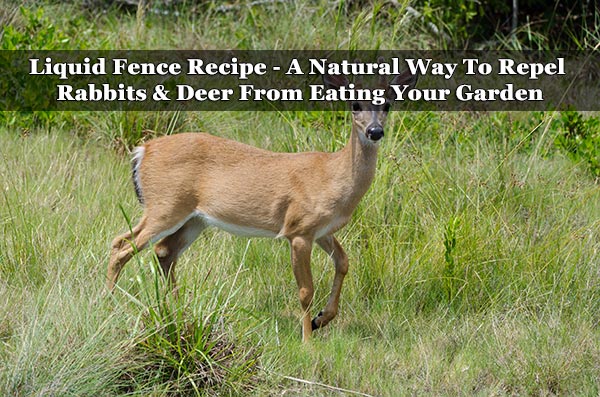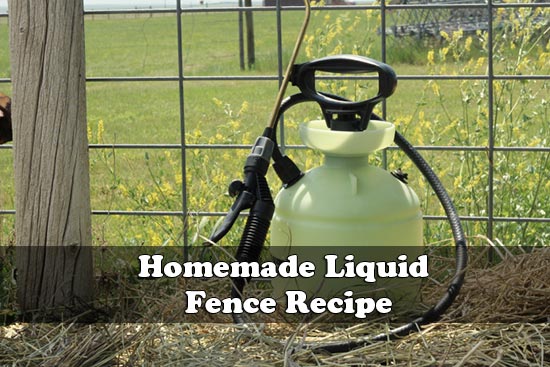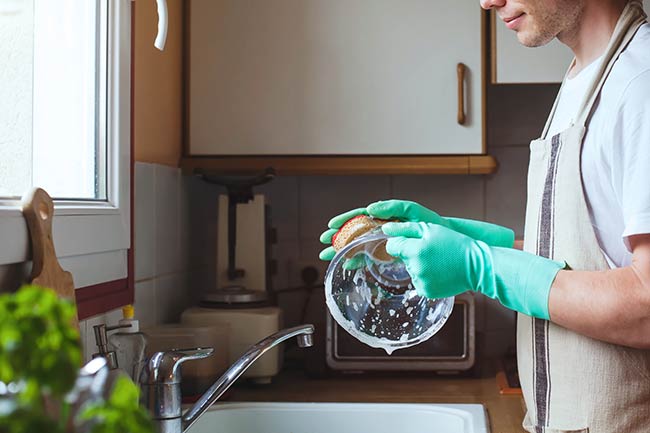Liquid Fence Recipe – A Natural Way To Repel Rabbits And Deer From Eating Your Garden

Make sure to like Living Green and Frugally on Facebook, Shop at Amazon to help support my site and explore our PINTEREST BOARDS for innovative ways you can become self-sufficient.
Gardening can be a delightful hobby, but nothing can be more frustrating than finding your hard-grown plants nibbled away by rabbits and deer. Instead of turning to chemical deterrents, why not consider a natural solution? A homemade liquid fence can be an effective and eco-friendly way to keep these garden invaders at bay.
Why Use a Natural Repellent?
Natural repellents have several advantages:
- Environmental Safety: They are safe for the environment, posing no harm to other wildlife, pets, or humans.
- Cost-Effective: Homemade solutions are often cheaper than commercial products.
- Customizable: You can tweak the recipe based on your specific needs and preferences.
Ingredients for a Natural Liquid Fence
Here’s a simple and effective recipe that uses common household ingredients:
- Eggs: 2-3 raw eggs
- Garlic: 4-5 cloves, crushed
- Hot Peppers: 1-2 tablespoons of hot pepper flakes or 1-2 fresh hot peppers, chopped
- Water: 1 gallon
- Dish Soap: 1 tablespoon
- Milk or Yogurt: 1 cup (optional, as a binder)
Instructions
- Prepare the Ingredients:
- In a blender, combine the eggs, garlic, hot peppers, and a small amount of water. Blend until smooth.
- Strain the Mixture:
- Pour the blended mixture through a fine mesh strainer or cheesecloth into a large bucket to remove solids. This prevents clogging when you transfer it to a spray bottle.
- Dilute with Water:
- Add the strained mixture to the gallon of water and stir well. If using milk or yogurt, add it now. This helps the solution adhere to plants better.
- Add Dish Soap:
- Mix in the tablespoon of dish soap. This helps the mixture stick to plant leaves and increases its effectiveness.
- Transfer to a Spray Bottle:
- Pour the solution into a spray bottle or garden sprayer for easy application.

Application Tips
- Timing: Apply the repellent in the early morning or late afternoon to avoid the heat of the day, which can cause the solution to evaporate quickly.
- Frequency: Reapply the solution every 1-2 weeks, and after heavy rains, as it can wash away.
- Coverage: Ensure you thoroughly cover all plants, focusing on the most vulnerable ones.
- Storage: Store any leftover solution in a cool, dark place and use within a month for best results.
How It Works
- Eggs: The sulfur in eggs emits an odor that is unpleasant to deer and rabbits.
- Garlic: Known for its pungent smell, garlic is a natural deterrent for many animals.
- Hot Peppers: The capsaicin in hot peppers irritates the mouths of animals, making them less likely to eat treated plants.
- Dish Soap: Helps the mixture adhere to plant surfaces.

Benefits and Considerations
Using a natural liquid fence not only protects your garden but also maintains a healthy ecosystem. Unlike chemical repellents, it won’t harm beneficial insects or contaminate the soil. However, remember that persistence is key. Natural repellents may not be as potent as chemical ones, so consistent application and reapplication are crucial for effectiveness.
Conclusion
Creating your own liquid fence is a simple, sustainable, and effective way to protect your garden from rabbits and deer. By using ingredients you likely already have at home, you can save money and avoid harmful chemicals. With regular application, your garden can thrive without the unwelcome munching of critters. Give this natural solution a try and enjoy a flourishing, untouched garden all season long.